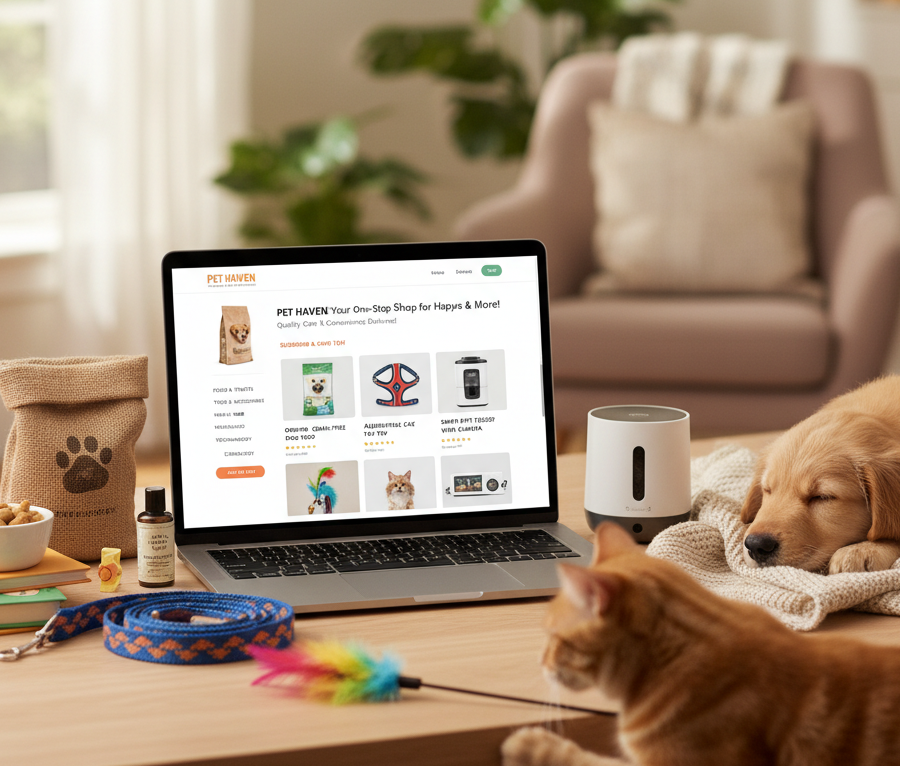The pet industry is experiencing an unprecedented surge, transforming from a niche market into a global phenomenon. At the heart of this growth lies the ever-expanding category of pet supplies. From nutritional sustenance to fashionable accessories, the sheer volume and variety of products available to pet owners today are staggering. This article delves into the dynamic world of pet supplies sales and transactions, exploring key strategies for booming businesses to thrive in a competitive landscape and for consumers to make informed purchasing decisions.
Understanding the Modern Pet Owner: More Than Just a “Pet”
Gone are the days when a pet was simply an animal kept for companionship. Today’s pet owners, particularly millennials and Gen Z, view their furry, feathered, or scaled friends as integral family members. This shift in perception has profound implications for the pet supplies market. Owners are willing to invest significantly in their pets’ health, happiness, and comfort, driving demand for high-quality, often premium, products. This translates into a market ripe for innovation and diverse offerings.
The Landscape of Pet Supplies: What’s Driving Demand?
The range of pet supplies is vast and ever-growing. Key categories include:
- Pet Food & Treats: This remains the largest segment, with a strong trend towards natural, organic, grain-free, and specialized dietary options. Raw food diets and subscription-based fresh food services are also gaining traction.
- Health & Wellness Products: Vitamins, supplements, dental care, grooming essentials (shampoos, brushes, nail clippers), and flea/tick prevention are constant necessities.
- Accessories & Toys: Collars, leashes, beds, carriers, crates, and an endless array of interactive and durable toys cater to both practical needs and recreational desires.
- Grooming Services & Products: Professional grooming is a significant business, but the sale of at-home grooming tools and specialized products is also robust.
- Pet Technology: GPS trackers, automatic feeders, pet cameras, and smart toys represent a rapidly growing segment, appealing to tech-savvy owners.
- Apparel & Fashion: Sweaters, coats, costumes, and even shoes for pets are increasingly popular, especially in urban areas.
The demand across these categories is fueled by factors such as rising disposable incomes, urbanization (leading to more apartment-dwelling pets and a focus on indoor supplies), and the humanization of pets.
The Evolution of Pet Supplies Sales Channels
The way pet supplies are sold and purchased has undergone a significant transformation:
- Brick-and-Mortar Retailers: Traditional pet stores, both independent and large chains, continue to be important. They offer a hands-on experience, expert advice, and immediate gratification. Many are evolving to offer services like grooming, training, and vet clinics to enhance the customer experience.
- Veterinary Clinics: Beyond medical services, vet clinics are a trusted source for specialized diets, prescription medications, and health-related supplements.
- Mass Merchandisers & Supermarkets: These stores offer convenience and competitive pricing for everyday pet essentials.
- E-commerce Platforms: The rise of online retail has revolutionized pet supplies. Dedicated pet e-commerce sites, large marketplaces (like Amazon, Chewy), and even direct-to-consumer (DTC) brands offer unparalleled convenience, vast selections, and often better pricing. Subscription models for recurring purchases (e.g., food, litter) are particularly popular.
- Social Media & Influencer Marketing: Platforms like Instagram and TikTok are powerful tools for brand discovery and sales, with pet influencers playing a significant role in promoting products.
Key Strategies for Businesses in Pet Supplies Sales
To succeed in this competitive market, businesses must adopt multifaceted strategies:
- Understand Your Niche: Identify your target audience (e.g., dog owners, cat owners, exotic pet owners, budget-conscious buyers, luxury seekers) and tailor your product offerings and marketing accordingly.
- Quality and Safety First: Pet owners are highly concerned about the safety and quality of products. Emphasize product ingredients, manufacturing processes, and certifications. Transparency builds trust.
- Optimize for E-commerce: A strong online presence is non-negotiable. This includes an intuitive, mobile-friendly website, high-quality product images and descriptions, secure payment gateways, and efficient shipping.
- Embrace Subscription Models: For recurring purchases like food or treats, subscription services offer convenience to customers and predictable revenue for businesses.
- Leverage Content Marketing: Create valuable content – blog posts, guides, videos – on pet care, training tips, product reviews, and healthy pet living. This establishes your brand as an authority and improves SEO.
- Harness SEO for Google Search:
- Keyword Research: Identify relevant keywords pet owners are searching for (e.g., “best grain-free dog food,” “durable cat toys,” “affordable pet insurance”). Use tools like Google Keyword Planner.
- On-Page SEO: Optimize product titles, descriptions, meta descriptions, and image alt tags with target keywords.
- Local SEO: For brick-and-mortar stores, ensure your Google My Business profile is complete and optimized to attract local customers.
- Technical SEO: Ensure your website loads quickly, is mobile-responsive, and has a clear site structure for Google crawlers.
- Engage with Your Community: Build a strong online and offline community. Host events, participate in local pet fairs, engage on social media, and provide excellent customer service.
- Personalization: Use data to offer personalized product recommendations and promotions based on a customer’s pet type, past purchases, and browsing history.
- Strategic Partnerships: Collaborate with veterinarians, dog trainers, pet sitters, and animal shelters for cross-promotion and referrals.
Navigating Transactions: Ensuring Smooth Purchases
For both businesses and consumers, smooth transactions are paramount:
- Secure Payment Gateways: Businesses must offer a variety of secure payment options (credit cards, PayPal, Apple Pay, etc.) to build trust and cater to diverse preferences.
- Clear Return Policies: Transparent and fair return/exchange policies are crucial for customer satisfaction and repeat business.
- Efficient Shipping & Tracking: Fast, reliable, and trackable shipping is a major differentiator in online sales.
- Customer Support: Responsive and helpful customer service can turn a one-time buyer into a loyal advocate. Provide multiple contact channels (phone, email, chat).
- Data Privacy: Businesses must adhere to data protection regulations and assure customers that their personal and payment information is secure.
The Future of Pet Supplies
The pet supplies market is poised for continued growth and innovation. Expect to see further advancements in sustainable and eco-friendly products, personalized nutrition based on pet DNA, and an even greater integration of technology into pet care. Booming Businesses that can adapt to these trends, prioritize customer needs, and leverage digital strategies will be well-positioned for long-term success.


